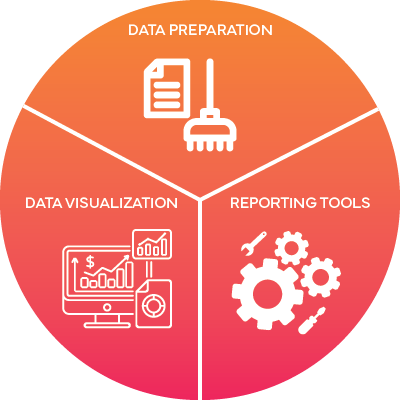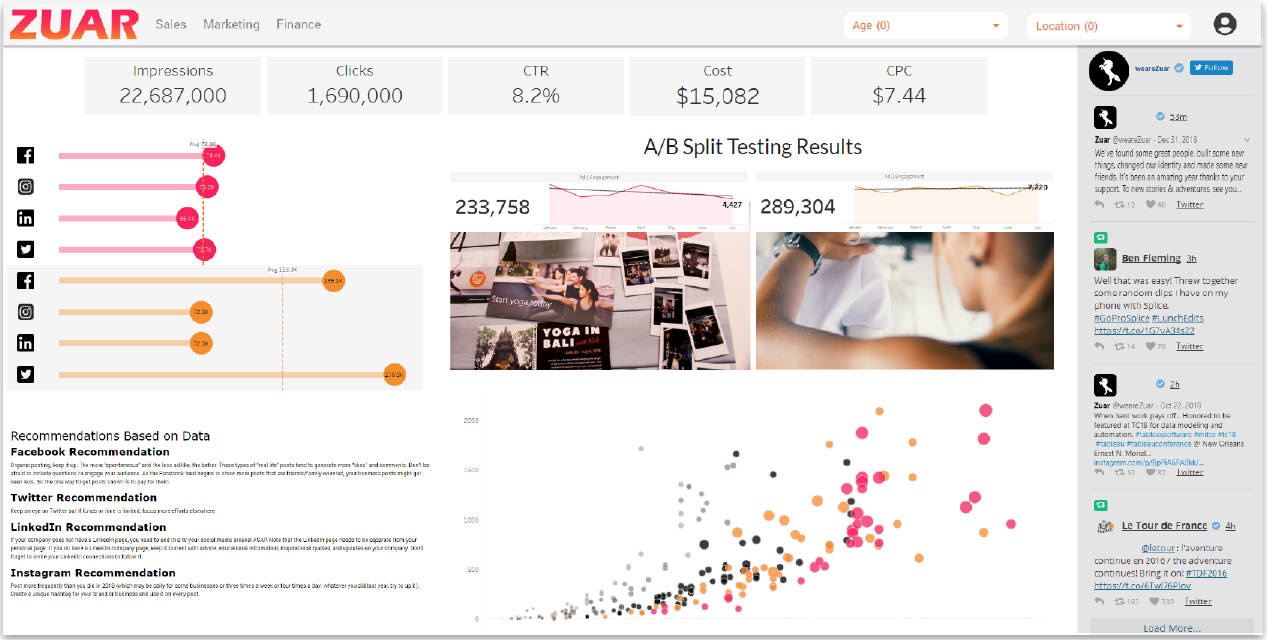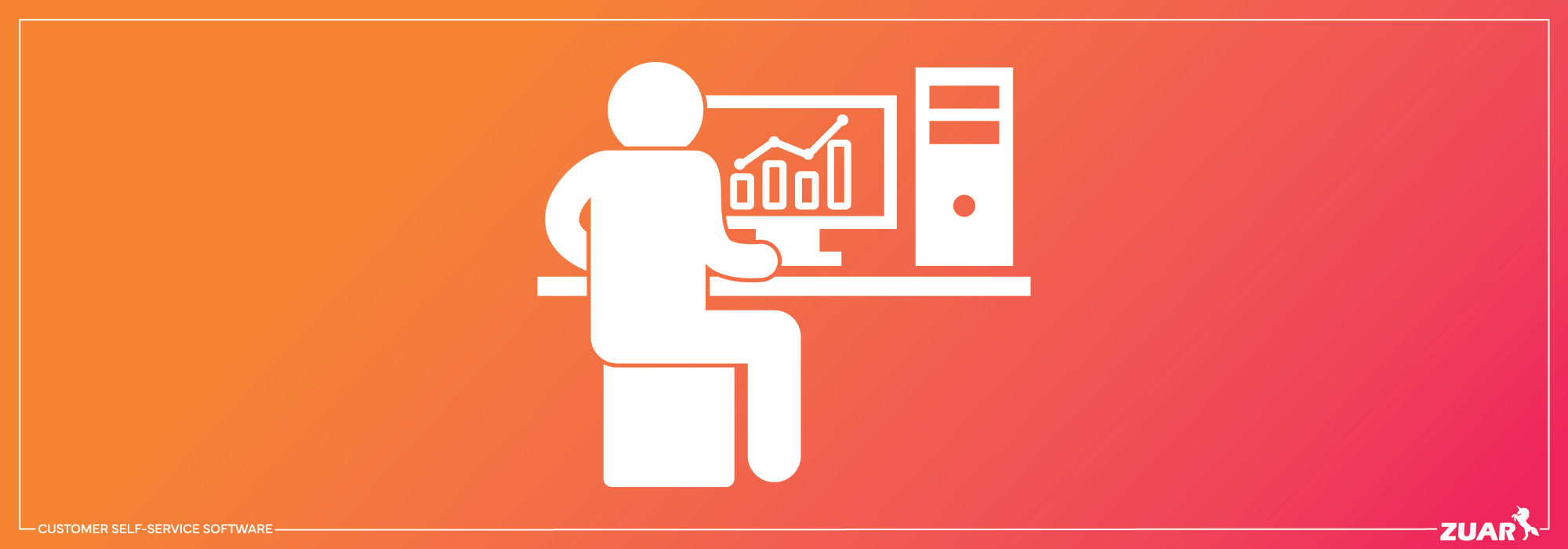What Is Self-Service Analytics & BI? Tools For Reporting & More
Learn what self-service analytics is, tools for self-service BI, its advantages and challenges, tips for how to implement it, and best practices.

Overview
Are you tired of waiting for data experts or IT teams to provide you with the insights you need to make informed decisions? Self-service analytics is here to empower you and your team to access, analyze, and visualize data independently, driving your business toward data-driven success.
This comprehensive guide will explore the ins and outs of self-service BI, compare top tools in the market, and provide invaluable tips for successful implementation. Get ready to unlock the full potential of your data!
Key Takeaways
- Self-service analytics enables non-technical business users to access, analyze, and visualize data independently.
- Advantages of self-service analytics include improved decision-making, increased efficiency, and enhanced collaboration.
- Organizations should consider factors such as needs, features, and scalability when selecting the right tool for their organization and follow best practices during implementation.
Related Article:


Understanding Self-Service Analytics
Self-service analytics is revolutionizing the way businesses use data. It enables non-technical business users to:
- Access data
- Analyze data
- Visualize data
- Make data-driven decisions
All of this can be done without relying on IT or dedicated data analysts.
This new approach has gained traction in recent years, as organizations seek a BI tool that empowers their workforce to access and analyze data autonomously.
Key Components of Self-Service Analytics

Three important elements are involved in self-service analytics:
- Data preparation: This plays a vital role in securing precise and significant analysis. It includes the identification and removal of outliers, treatment of missing values, alteration of data types, and the merging of tables.
- Data visualization: This involves creating visual representations of data to help users understand patterns, trends, and insights more easily.
- Reporting tools: These tools allow users to generate reports and share findings with others in a clear and concise manner.
The Rise of Self-Service Analytics
The increasing need for data-driven decision-making has led to the rapid growth of self-service analytics. Organizations are realizing the value of equipping their workforce with the tools to access and analyze data independently, without relying on IT support or dedicated data analysts.
This has driven the development of user-friendly self-service BI tools, designed to support data exploration, visualization, and reporting by business users with varying levels of technical expertise.

Advantages of Implementing Self-Service Analytics
Implementing self-service analytics offers numerous self-service capabilities to organizations, including improved decision-making, increased efficiency, and enhanced collaboration.
Empowering users to independently access and analyze data, self-service analytics removes bottlenecks and enhances business processes. This leads to increased agility and a more data-centric culture within the organization.
Improved Decision-Making
Self-service analytics tools provide users with data-driven insights, enabling them to make better and more informed decisions.
These self-service business intelligence tools allow users to explore and analyze data independently, thus revealing valuable insights that may have been missed by traditional BI tools and processes.
This, in turn, leads to more accurate and well-informed decision-making, ultimately driving positive business outcomes.
Increased Efficiency and Productivity
One of the primary benefits of self-service analytics is the increased efficiency and productivity it brings to organizations.
Enabling users to independently access and analyze data allows organizations to lessen their dependence on IT teams or data analysts for ad hoc requests and data analysis tasks.
This allows business users to focus on their core responsibilities and make data-driven decisions based on business data in a more timely and efficient manner, ultimately driving business operations forward.
Enhanced Collaboration
Self-service analytics promotes collaboration within organizations by offering users the opportunity to share insights, visualizations, and reports with their teams.
This streamlined data sharing enables teams to work together more effectively, as they can easily access and assess data, and share their discoveries with each other.
This collaborative approach to data analysis not only leads to more accurate insights but also helps foster a data-driven culture within the organization.
Example of self-service analytics using Zuar Portal:

Challenges and Considerations
While self-service analytics offers numerous benefits, it is not without challenges. Ensuring data quality and governance, addressing security and privacy concerns, and providing adequate training and support for users are all critical considerations when implementing self-service analytics.
By addressing these challenges, organizations can maximize the benefits of self-service analytics and ensure their employees are equipped to attain actionable insights.
Data Quality and Governance
The success of self-service analytics hinges on the assurance of data quality and governance. Inaccurate or incomplete data can lead to flawed insights and decisions, making it essential to have robust data preparation and validation processes in place.
This involves identifying and removing outliers, treating missing values, and altering data types, among other tasks, to ensure the data being analyzed is reliable and accurate.
Additionally, establishing clear data governance policies helps maintain data quality and consistency across the organization in the long term.
Security and Privacy Concerns
As access to data is democratized by self-service analytics tools, the resolution of security and privacy concerns becomes progressively crucial. Organizations must ensure that sensitive information from various data sources is protected and only accessible by authorized users.
This can be achieved through user access control, data cataloging and curation, and robust data governance policies that adhere to relevant data privacy regulations.
Training and Adoption
To ensure the successful adoption of self-service analytics tools, adequate training and support must be provided. Users must be equipped with the necessary knowledge and skills to effectively leverage the platform and make data-driven decisions.
Organizations should invest in training programs that cover not only the use of self-service analytics tools but also the process of locating relevant data and creating effective data visualizations, dashboards, and reports.

Top Self-Service Analytics Tools
With so many self-service analytics tools available in the market, choosing the right one for your organization can be challenging. To help you make an informed decision, we have compared some of the top self-service analytics tools, including:
- Microsoft Power BI
- Tableau
- Zuar Portal
- ThoughtSpot
We have highlighted their features and capabilities.
Understanding the strengths and weaknesses of each tool allows you to choose the most suitable platform to empower your organization with self-service analytics.
Microsoft Power BI
Microsoft Power BI is a popular self-service analytics tool that offers a wide range of features, including data visualization, reporting, and integration with other Microsoft products.
With its user-friendly interface and extensive library of data connectors, Power BI enables business users to easily create interactive dashboards and reports, making it an excellent choice for organizations requiring rapid and effortless data analysis.
Power BI’s intuitive design and powerful features make it a good choice for businesses of all sizes.
Tableau
Tableau is a self-service analytics platform known for its advanced data visualization capabilities and user-friendly interface. With its robust set of features, such as data exploration, data blending, and predictive analytics, Tableau allows users to dive deep into their data and uncover valuable insights.
It is most suitable for organizations that possess the technical capabilities to configure the platform, model the data, and generate the necessary insights for each department.
Zuar Portal
Zuar Portal is a powerful embedded analytics tool that can connect to both Tableau and Power BI, as well as ThoughtSpot and other various BI platforms, to create one unified analytics experience.
This solution is the easy way to create unique analytics hubs for executives, employees, partners, vendors, customers, and more. It provides you with drag-and-drop simplicity to easily build your analytics HQ.
Zuar Portal is the ideal solution for self-service analytics as it allows end users to easily and securely access all your organization's analytics at any time, from anywhere, without a VPN or MDM.
Click here to learn more about Zuar Portal...

ThoughtSpot
ThoughtSpot allows users to search for data and generate insights using natural language queries. Users can type questions or keywords in plain English, and the platform will return relevant data visualizations and reports.
It is designed to make data analytics and reporting accessible to a wide range of users, including those who may not have a background in data analysis or programming.
Additionally, ThoughtSpot can be paired with Zuar's solutions. With Zuar Runner, data can be extracted and modeled from hundreds of potential sources, then transported to your analytics database. From there, users can leverage ThoughtSpot to easily query the data, detect anomalies, spot trends, and more.
By merging ThoughtSpot's capabilities with the Zuar Portal, organizations can establish a fully branded analytics hub that transforms data into profits for customers, employees, vendors, and collaborators.
This integration results in a fully customized, secure embedded analytics application, offering users a streamlined solution for querying their data insights. Click here to learn more about Zuar + ThoughtSpot!
See our list of 8 best self-service analytics tools:


Tips for Choosing the Right Self-Service Analytics Tool
Selecting the right self-service analytics tool for your organization requires careful consideration of various factors, including your organization’s specific needs, the features and capabilities of each platform, and their scalability and flexibility.
By assessing these factors, you can choose the best tool to empower your organization with self-service analytics and drive data-driven success.
Assessing Organizational Needs
When selecting a self-service analytics tool, assessing your organization’s specific needs is of paramount importance. Factors to consider include:
- Size of the organization
- Type of data being analyzed
- Complexity of the analysis
- Budget
Taking these factors into account will help you choose the right tool for your organization.
By understanding your organization’s unique requirements, you can ensure that the chosen platform aligns with your goals and provides the necessary features and capabilities to empower your users.
Comparing Features and Capabilities
Identifying the best fit for their needs is facilitated for organizations by comparing the features and capabilities of different self-service analytics tools. When evaluating tools, consider factors such as:
- Ease of use
- Data integration capabilities
- Data visualization options
- The platform’s ability to handle complex queries
By comparing these aspects, you can select a tool that not only meets your organization’s needs but also enables users to effectively analyze and interpret data.
Considering Scalability and Flexibility
Considering scalability and flexibility is also important when choosing a self-service analytics tool. The platform should be able to scale up or down as required, handle increasing amounts of data and users, and provide customization options to fit specific requirements.
Additionally, the tool should be capable of integrating with other systems, allowing your organization to adapt and grow with changing needs.
Consulting With the Experts
Consulting with experts when considering a self-service analytics platform offers several key benefits:
- Expertise and Guidance: Experienced consultants bring deep knowledge of the self-service analytics landscape. They can assess your specific business needs and guide you in selecting the right platform that aligns with your goals and requirements.
- Optimized Implementation: Consultants can help you design and implement the platform effectively, ensuring that it's configured to maximize its capabilities for your unique data and workflows. This can save you time, resources, and potential pitfalls.
- Customization: Experts can tailor the platform to fit your organization's specific needs, integrating it seamlessly with your existing systems and data sources. This customization can lead to a more user-friendly and productive analytics environment.
- Scalability and Future-Proofing: Experts can help you plan for scalability and growth, ensuring that your self-service analytics platform can evolve as your organization's needs change over time.
For these reasons, we recommend teaming with Zuar to ensure the success of your self-service analytics project. Zuar has deep knowledge and experience in the self-service analytics landscape and can guide you through software selection to implementation to long-term support. Learn more about our data services...


Best Practices for Implementing Self-Service Analytics
Implementing self-service analytics can be a game-changer for your organization, but it is essential to follow best practices to ensure success.
By establishing clear roles and responsibilities, encouraging data literacy, and monitoring and adjusting as needed, you can maximize the benefits of self-service analytics and empower your employees to make data-driven decisions.
Establishing Clear Roles and Responsibilities
Establishing clear roles and responsibilities within your organization is essential for the successful implementation of self-service analytics. This includes determining who will have access to the platform and what level of access they will have, as well as assigning responsibilities for data governance and quality.
By setting clear expectations and ensuring all users understand their roles, you can create a strong foundation for self-service analytics success.
Encouraging Data Literacy
Maximizing the benefits of self-service analytics requires data literacy. By providing training and resources, you can empower your employees to effectively analyze and interpret data, leading to more informed decision-making and a data-driven culture within your organization.
Encouraging collaboration and knowledge-sharing among users is important to foster an environment where data literacy is valued and continually improved.
Monitoring and Adjusting as Needed
To ensure the continued success of your self-service analytics implementation, regular monitoring and adjustments are key. This includes:
- Reviewing data quality
- Verifying the accuracy and reliability of insights generated
- Making any necessary adjustments to the platform or processes based on user feedback and needs.
By staying vigilant and adapting to changing requirements, you can ensure your organization continues to reap the benefits of self-service analytics.
Implementing Embedded Analytics
Embedded analytics is the integration of data analysis and reporting capabilities directly into websites or third-party applications or platforms, allowing users to access insights within their familiar workflow.
This enhances self-service analytics by seamlessly integrating data insights into a website or existing applications, offering users real-time, customized, and secure access to data.
This approach not only improves user experience and accessibility but also streamlines decision-making, promotes data-driven cultures, and reduces costs by eliminating the need for separate analytics tools.

Ensuring Self-Service Analytics Success
Implementing self-service analytics has the power to transform the way your organization accesses and utilizes data. However, without the proper tools and guidance, achieving effective self-service analytics is nearly impossible.
But that's where Zuar can help. Not only do we have Zuar Portal that gives you secure access to your organizational analytics, we also have Zuar Runner, an end-to-end data pipeline solution that can collect, transform, model, warehouse, report, monitor, and distribute your data.
By utilizing the Zuar Suite along with our data services, you can revolutionize your data analytics capabilities and drive informed decision-making. Get the ball rolling by scheduling a data strategy assessment with one of our data experts!




